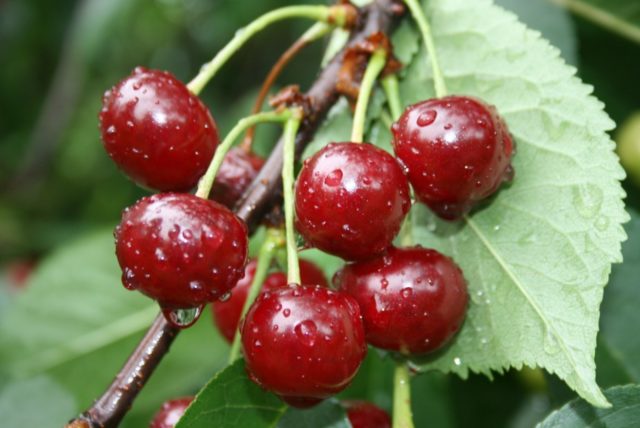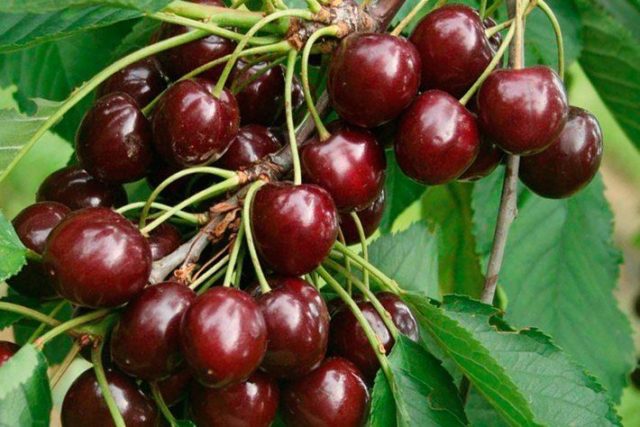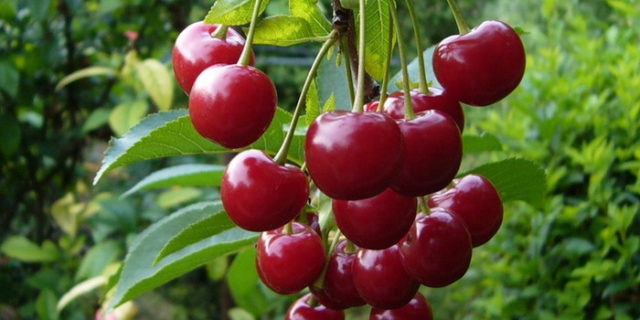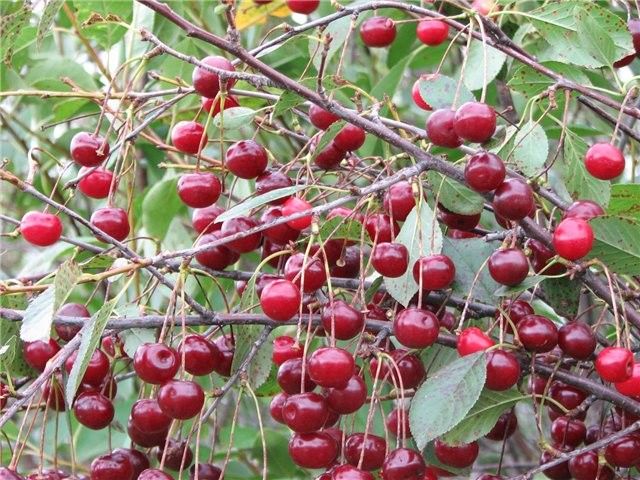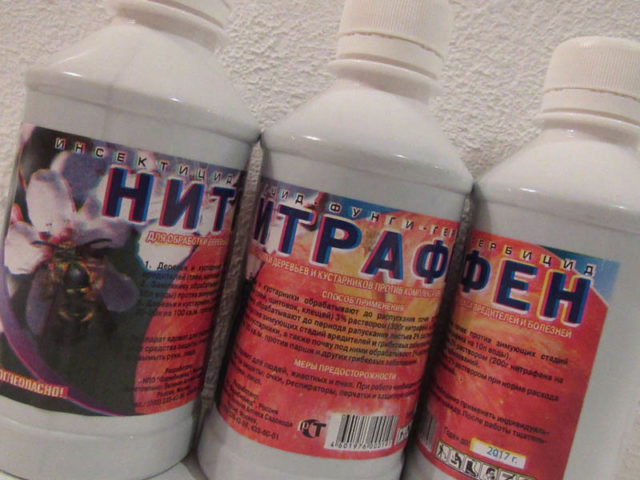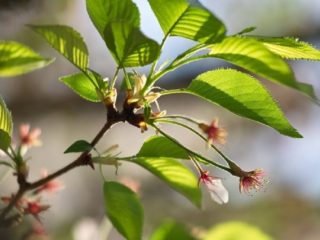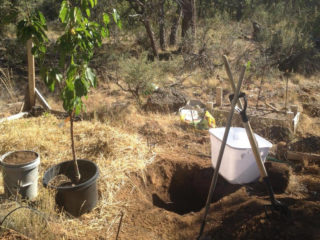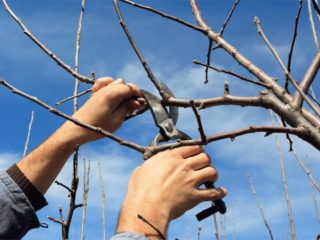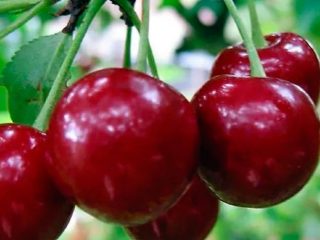Content
Cherry Prima is widely popular among experienced gardeners, as this plant is durable, high-yielding, unpretentious and non-capricious. Sweet and sour berries, which are always in abundance, are eaten both fresh and processed into juices and jams. However, in order for cherries to bring a rich harvest, it is important to know the agricultural techniques of growing crops, the features of care, as well as how to protect the tree from diseases and pests.
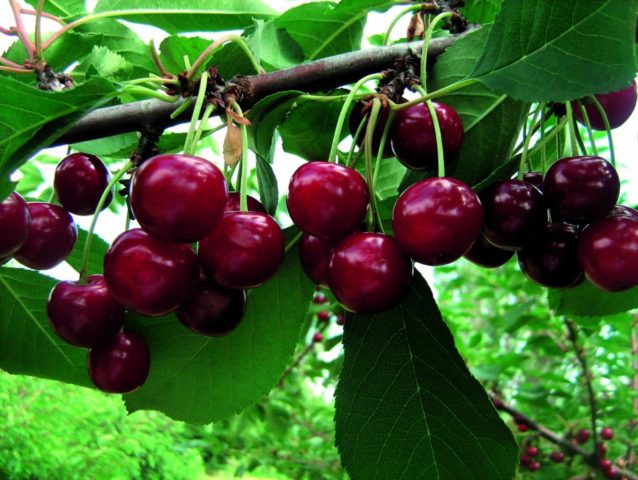
Cherry Prima always bears abundant fruit
Description of the Prima cherry variety
For more than two thousand years, cherry trees have been grown in gardens throughout Europe, because the fruits of this culture are not only tasty, but also useful for the body. More than 100 types of cherries are known, however, Prima is one of the most popular due to its high yield and unpretentiousness. Further, the Prima cherry variety is considered in detail, a photo and description of an adult tree and fruits are given, and agricultural technology for growing this crop is given.
Height and dimensions of an adult tree
An adult Prima cherry tree reaches medium size (up to 3 m in height) or is vigorous (up to 3.5 m). A dense, slightly raised crown with medium-sized glossy leaves has a predominantly round shape. It is recommended to grow cherries of this variety everywhere in the territory of the central region of Russia.
Description of fruits
Rounded dark red berries with juicy, dense, brightly colored pulp weigh from 3 to 4 g. The taste of the fruit is pleasant, with a rich cherry aroma, the stone is easily separated from the pulp.

Prima cherry fruits are sweet and sour and very juicy
A characteristic feature is that after ripening its cherries are able to sag on the branches of the tree until September. At the same time, the gastronomic quality of berries does not decrease at all, they are not baked in the sun and do not lose their presentation.
Cherry pollinators Prima
Cherry Prima is characterized by late flowering. The variety does not belong to self-fertile, therefore, for pollination, the presence of other representatives of the species in one area is necessary. The following cherry varieties are considered the best as pollinators:
- Vladimirskaya;
- Zhukovskaya;
- Lyubskaya;
- Shubinka.
These varieties, like the Prima cherry, bloom in the second half of May, and therefore are ideal pollinators for each other.
Main characteristics of Prima cherries
Cherry Prima is a fast-growing, late-ripening culture that loves quiet, sunny and calm places. Under favorable weather conditions, you can start harvesting from the end of July.
Drought resistance, frost resistance
Cherry thrives in regions with a harsh climate and equally tolerates heat and prolonged drought, as well as severe frosts and snowy winters. It is thanks to its drought resistance and frost resistance that Prima is grown in almost all regions of Russia.
Yield
Prima begins to bear fruit under favorable conditions in the fourth year after planting the seedlings. From one tree you can get up to 20-25 kg of selected berries, however, this is not the limit. Earlier, in especially favorable years, a harvest of 80-83 kg of cherries from one adult plant was recorded.
Fruiting depends on the soil and the place in which the tree grows, as well as on the schedule of watering and fertilizing. If Prima does not have enough sunlight, the fruits will turn out to be small, they will be small and sour. Once every three years, the crown of the plant should be pruned to rejuvenate - this increases the tree's fertility.
The berries have a strong elastic skin and dense flesh, therefore they tolerate transportation well and are characterized by high keeping quality. The area of application of the fruits is quite wide - they are used both fresh and after being cooked. Juices are made from cherries, compotes, jams and preserves are boiled, canned and frozen for the winter.
Advantages and disadvantages
The advantages of the Prima variety include the following characteristics:
- high productivity;
- taste of fruits, versatility of their use;
- good transportability and keeping quality of berries;
- adaptability to unfavorable climatic conditions.
However, despite such a number of positive qualities, Prima cherry has some disadvantages:
- tallness makes harvesting difficult;
- the variety is susceptible to such a disease as moniliosis.
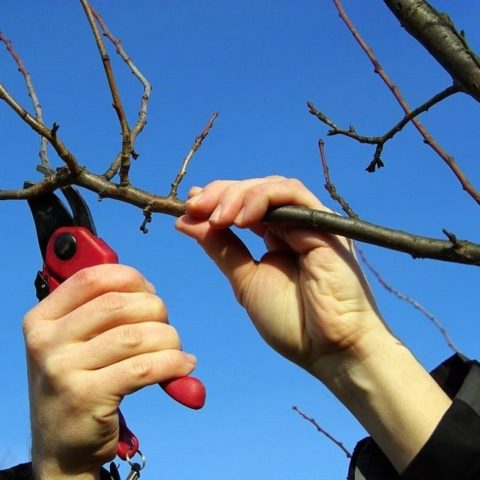
In addition, it is necessary to regularly thin the crown to ensure uniform ripening of the crop.
Landing rules
In order for a tree to bear fruit well, it is important to follow the rules of agricultural cultivation, as well as to choose high-quality planting material. When buying Prima seedlings, you need to pay attention to the root system, it must be well formed and developed. This will speed up the survival of the plant in a new place.
Recommended timing
Planting of Prima cherry seedlings with a bare root system is carried out in early spring in a previously prepared and fertilized pit since autumn. Grafted annual plants are used as planting material. If the cherry seedlings are containerized, they can be planted in the ground throughout the entire spring-summer period.
It is important to remember that this cherry variety requires pollinators. Therefore, if there are no suitable specimens in neighboring plots, you need to purchase them directly when buying Prima seedlings and plant them in the ground at the same time.
Site selection and soil preparation
Cherry loves well-lit and draft-free places. Therefore, it is advisable to plant Prima's seedlings between courtyard or summer cottages, however, so that they do not shade the trees.
It is also worth paying attention to the soil in which the cherry will grow. Prima does not tolerate stagnation in the root system of water or periodic flooding during the rainy season. Therefore, if such a probability exists, you should ensure a good outflow of water before planting or make a fill mound.
Most suitable for Prima cherries are drained loamy or sandy loam soils with an acidity of 6.5-7.0 pH. If a site with clay or sandy soil is allocated for planting, the plant is likely to develop poorly, bear fruit poorly and quickly die. To avoid this, it is necessary to prepare a large planting hole for the seedling, at the bottom of which drainage should be laid, as well as a substrate rich in humus.
How to plant correctly
When planting young Prima cherry trees on the site, it should be borne in mind that they grow rapidly and, with a dense planting pattern, will shade each other. Therefore, there should be at least 9-12 square meters between the seedlings. m.
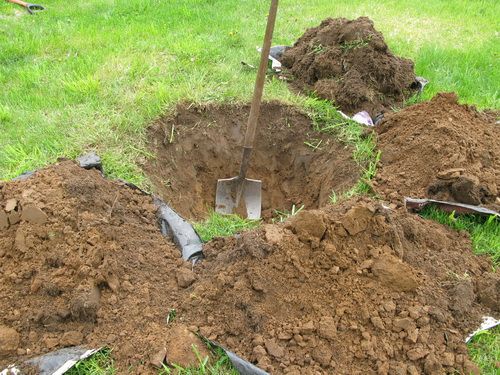
Planting pit width - 80 cm, depth - 60 cm
Organic fertilizers are applied to the bottom in the form of horse humus or humus (two buckets), as well as 20 g of potassium chloride and 40 g of superphosphate. The Prima seedling is planted in such a way that the root collar is 5-7 cm above the ground level.
Care features
Cherry Prima does not require special care and all activities are reduced to regular watering, timely fertilization and annual crown pruning. In addition, despite the frost resistance of the variety, in regions with harsh winters, it is worth taking care that the cherry can more easily endure severe cold.
Watering and feeding schedule
After planting a seedling, it is enough to water it once a week for a month. Then you can switch to the schedule four times a month - twice a day (morning and evening). Each plant should consume at least a bucket of water. It is important not to restrict the tree in watering during the fruiting period and the active formation of flower buds for the next year (this happens in June and July), otherwise the harvest will be bad in the current year and in the future.

If fertilizers are applied in the form of granules, subsequent watering is necessary.
In addition to root dressing during planting, fertilizers are applied twice a year:
- before flowering: 10 g of urea, 25 g of superphosphate, 15 g of potassium chloride in a bucket of water;
- at the end of the autumn season: cherries are fertilized with organic compounds (40 g of manure per tree), superphosphate (400 g) and potassium sulfate (150 g).
In addition, liming of the soil should be done once every five years. To do this, 300 to 500 g of ground limestone or dolomite flour are scattered under each tree.
Pruning
In April of each year, before budding, it is important to carry out anti-aging cherry pruning. This will help to increase the yield of Prima, increase the sugar content of berries, and also prevent many diseases.
Weak curves, as well as shoots growing inside the crown, are completely removed. Leave only straight strong branches growing to the side, and not up.
It is necessary to cut off fruiting shoots that sink to the ground. You also need to limit the height of the tree at 3 m, cutting off the branches stretching upward. This will give the opportunity to develop laterally. It should be remembered that you cannot remove more than a quarter of the mass of the entire crown at a time.
Preparing for winter
In order for the tree to better endure early frosts, when there is still no snow, as well as strong winter winds, it is recommended to mulch the root zone with humus in the fall. You should also wrap the trunk of young trees with a special covering material.
Diseases and pests
Cherry Prima is susceptible to diseases such as monilial burn or moniliosis, and if the plant is left untreated, it dies. The causative agent is fungi, as a result of the vital activity of which young leaves and shoots dry out. Moreover, they have a characteristic appearance, reminiscent of the impact of flames. Gray protruding growths appear on the fruits, the berries rot and fall off.
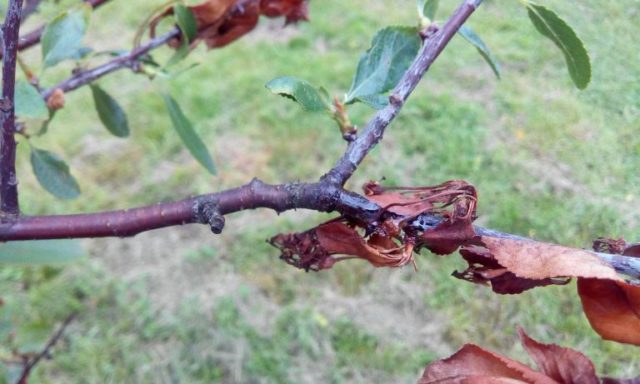
Cherry branch affected by monoliosis
They fight the disease by spraying the affected, as well as nearby branches, with a 3% nitrafen solution in early spring.
Blackened shoots should be removed. Then it is important to spray the tree with 2% Bordeaux mixture before opening the buds. And immediately after the end of flowering, re-spraying with only 1% solution is carried out.
Conclusion
Cherry Prima, grown in compliance with all the rules of agricultural technology, will certainly delight the amateur gardener with a bountiful harvest. It is important not to forget to take preventive measures to combat diseases in time, adhere to the watering schedule and apply fertilizers.
